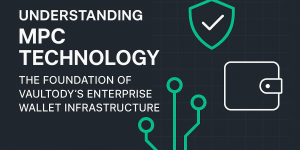Major Password Leak in June 2025: A Wake-Up Call for Crypto Custody Security

Password Leaks Are No Longer Just a Privacy Concern - They’re a Direct Crypto Threat
On June 19, 2025, security researchers confirmed that more than 10 billion passwords—including credentials linked to Google, Facebook, Apple, and other platforms—have been leaked in what’s being called the largest credential breach in internet history.
While most media coverage has focused on privacy and identity theft, the crypto industry faces a far more immediate threat: the loss of digital assets due to compromised logins tied to wallets, exchanges, and decentralized applications (dApps).
If your crypto project or portfolio depends on social login (SSO) or even basic email-password access, it may already be vulnerable.
👉 This is where Vaultody’s secure custody solution becomes not just useful - but essential.
What Happened on June 19? The Largest Password Leak in History
Security platform Cybernews first flagged the leak after a compilation dubbed "RockYou2024"—an evolution of previous breach compilations—surfaced online.
The leak reportedly includes:
- 10 billion+ passwords in plain text
- Credentials tied to Google, Facebook, Apple, Microsoft, and LinkedIn
- Data from previous breaches repackaged and refreshed
- High match rates with active, still-used credentials
TL;DR: If you use the same Google login for email, Facebook, and your favorite dApp or centralized exchange, you could be exposing your wallet to theft.
Why Crypto Custody Is Uniquely Vulnerable to Leaked Passwords
The traditional web2 threat model—passwords leading to account takeover—is now being exploited in web3 via:
- Wallet services tied to email or social login
- Exchanges where 2FA is not enforced
- Crypto apps offering one-click Google login for convenience
This kind of dependency creates a single point of failure. Once your credentials are exposed in a breach:
- Hackers can easily reset or bypass login flows
- They may be able to sign into connected wallets
- Funds can be withdrawn, swapped, or bridged before users even notice
Even hardware wallet users aren’t completely safe if they’ve authorized a third-party app using SSO.
The Hidden Risk of Social Login in Crypto Apps and Wallets
Many Web3 projects today use Google or Apple login APIs to streamline onboarding. While this increases user acquisition, it drastically reduces security, especially if:
- The project doesn’t implement independent custody or transaction controls
- Seed phrases or private keys are stored in browser or device memory
- Social login becomes the de facto authentication method for wallet access
⚠️ In short: If the login is compromised, so is the crypto.
How Vaultody Prevents Credential-Based Attacks
At Vaultody, we believe that secure crypto custody must be independent of web2 login layers. Here's how our solution protects users, regardless of leaks like RockYou2024:
✅ 1. Authentication ≠ Authorization
Vaultody separates identity authentication (logging in) from custody authorization (moving funds). Even if your Gmail is hacked, attackers cannot move assets without Vaultody’s multi-layer approval.
✅ 2. MPC and HSM Integration
Vaultody leverages MPC (Multi-Party Computation) and HSMs (Hardware Security Modules) to secure keys and transaction workflows—meaning your private keys are never stored or exposed.
✅ 3. Role-Based Access and Policy Controls
Projects and institutions using Vaultody can assign roles, set transaction rules, and enforce security policies. Stolen credentials alone don’t unlock custody access.
✅ 4. Keyless Recovery Options
Unlike seed phrases that can be phished, Vaultody supports secure key recovery mechanisms that don’t rely on vulnerable emails or cloud backups.
Use Case: What If Your Google Account Gets Compromised?
Imagine this:
You’re a crypto founder or investor. You use your Gmail to sign in to a portfolio tracker, a DeFi app, and even a non-custodial wallet interface.
Your Gmail credentials get leaked in the June 2025 breach. Within hours:
- Hackers reset your connected app passwords
- They sign in, authorize transfers
- You lose thousands in crypto before 2FA triggers any alert (if you had it enabled at all)
Now imagine you were using Vaultody:
- Your crypto is not tied to your Gmail
- No one can access custody or transfer permissions without Vaultody-level approval
- Disaster averted
Best Practices for Founders, Projects, and Users
Here’s how you can protect your crypto—both as a user and as a platform builder:
🔒 For Users:
- Avoid using social logins for crypto apps
- Enable hardware-based 2FA (YubiKey, Authenticator)
- Store crypto in wallets integrated with independent custody layers
- Rotate passwords, and check if your email is in the June breach
🧱 For Web3 Founders:
- Stop using Google/Facebook login as the only access layer
- Implement non-custodial or semi-custodial architecture
- Use Vaultody APIs to manage secure, policy-based fund control
- Consider zero-trust login models for future-proofing your dApp
Conclusion: Crypto Security Starts at the Custody Layer
The June 2025 password breach is not just a wake-up call - it’s an opportunity to evolve. As the line between web2 and web3 blurs, your custody model is either your last line of defense - or your weakest link.
With Vaultody, crypto platforms, exchanges, and dApps gain an independent, secure, and robust custody layer that isn’t reliant on fragile passwords or compromised logins.
Ready to Protect Your Crypto Users?
Book a free demo with Vaultody today and see how easy it is to secure digital assets without compromising user experience.




 Login
Login







 Copy link
Copy link